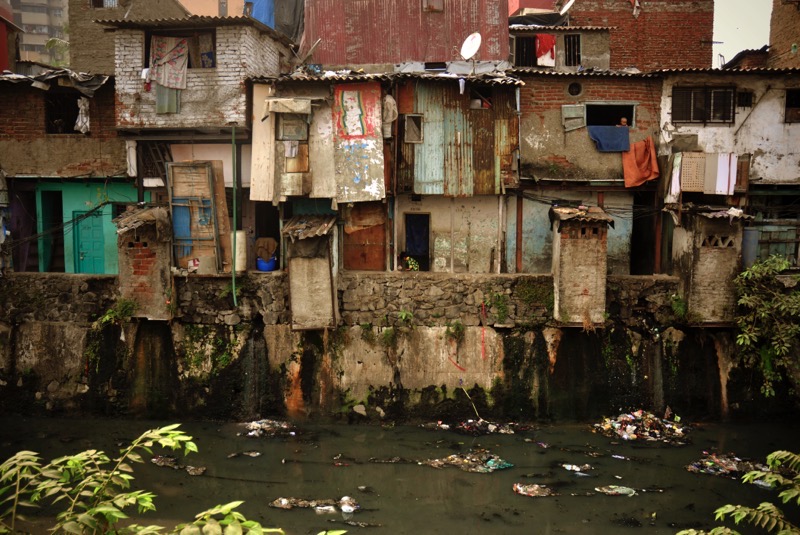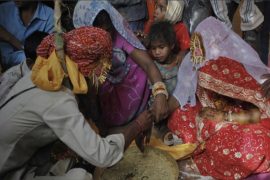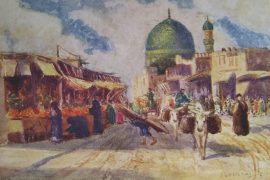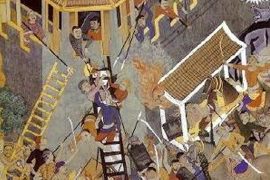The practice of ‘untouchability’ may have been abolished, but it has certainly not ended. The caste system has historically segregated lower caste populations well away from the eyes and lives of the high castes.
Through religious law books, the ‘untouchables’ were excluded from society and called the polluting presence. They were forbidden to cast their presence in a temple, which was punishable by law, or barred from the streets which housed upper caste people.
People from lower castes were pushed out of the physical limits of society by housing them beyond the villages in the outskirts. With practices and laws, the rule had been maintained for a long time.
We’re in 2024, and people are debating the reservation system, claiming that it enforces a system that does not exist, but does it mean the practices don’t as well?
Nagaraj Hettur was looking for a house to rent in the Santinagar and Hemavati Nagar areas of Hassan. He had looked at at least fifty houses in the past fifteen days. Finally, he found his perfect house next to his daughter’s school.
The next day, he contacted Manjegowda, the president of Karnataka Sahitya Parishat, regarding the property. Manjegowda contacted the owner of the house and made a recommendation for Hettur.
Hettur was called the very next morning to meet the owner. A sense of relief washed over him as he was tired of looking for houses. He was excited and happy with the recently reviewed property and felt confident in being able to secure it with Manjegowda’s recommendation.
Hettur and Manjegowda looked around the house the next morning and gave a thumbs-up to the owner. Hettur even offered to pay the advance; however, it never came to that.
Outside the house, in front of Manjegowda, the owner blatantly asked a disrespectful question: ‘What is your caste, sir?’ Hettur was a social worker who often appeared on TV shows, so lying was pointless. He was a Scheduled Caste (SC), and that’s exactly what he told the owner. In response, the owner said:
Please don’t be offended, but I don’t rent the house to SC.
Hettur had all the financial resources needed to rent the house, but the systemic denial of the landlords tells the story of modern-day housing apartheid to keep Dalits (formerly called the untouchables) segregated in spaces away from the higher castes.
While residential segregation based on caste and tribe is changing over time, it is not decreasing to integrate the lower castes and to reduce the practice of untouchability. There is unvarying, if not greater, residential segregation based on caste.
BR Ambedkar strongly encouraged Dalits to move towards the urban areas to escape casteism and benefit from cosmopolitanism. As per a study based on the census of 2011, the level of migration of lower caste in the rural-urban migration and smaller cities has increased. However, just because the population has increased, the extent of segregation has not been affected.
The residential segregation in India’s largest cities is greater by caste and tribe than socioeconomic status. Additionally, these households have fewer and low-quality facilities compared to the houses of the high-caste population.
Residential segregation around the world shows that it widens the social gap between the groups of countries. For example, in the United States, the residential areas of Black Americans and other ethnic minorities have often been seen in a bad light. Areas of crime, suspicion, and smuggling are often associated with where the minority communities live, enforcing the negative stereotypes of the minority. These communities face marginalisation and alienation with systemic racism, which is detrimental to their social and economic development.
Since the segregation of spaces is at the centre of caste-based discrimination and obstructive social and economic mobility, Ambedkar advocated migration to urban areas. Many sociologists have encouraged urbanisation similarly in the hope of ending India’s caste system, yet housing apartheid thrives.
The type of discrimination Hettur faces is a common experience amongst the Dalits and Muslims in India. Sharankumar Limbale migrated to Latur, Maharashtra, to take the job of a telephone operator. He struggled to find a residence just like Hettur. He claims that he could not secure a rental house unless he keeps his caste a secret, but that could make him vulnerable to exposure and violence that may follow.
‘This city was made of herds of castes. Even localities were identified by castes,’ Limbale describes the new city he had migrated to.
Dalits across the country face such discrimination and are forced to live in densely populated areas with flimsy land rights and limited public service. Historical trends suggest that spaces allocated to the Dalit migrants and other tribal groups don’t even receive the same quality of in-house drinking water and sanitation facilities.
The cities of Gujarat are experiencing increased residential segregation. SCs change their surnames to avoid being identified as lower caste people in the hope of accessing better housing. Patels and Brahmins are privileged castes of Gujarat which dominate the housing communities. Many, like Hettur and Nagraj, face either outright refusal to purchase or rent properties or get quoted higher prices.
While India is urbanising and moving forward on the path of modernisation, is it changing anything to integrate and unite its people divided through the social hierarchy of caste? Is it demolishing the degrading practices of untouchability, which is abolished in theory? Or is it fundamental to maintaining it?
The Government of India provides little on the actual patterns of the neighbourhood to analyse systemic enforcement of caste discrimination. However, through the accounts and experiences of Dalits, it is clear that housing apartheid.
The roots of social discrimination based on caste run deep as the high-caste dominated society has stunted the social and economic mobility of low caste through residential and employment segregation.
There is no ‘de jure policy’ of segregation in India, but Dalits face ‘de facto segregation’ in society as a means to emphasise their position as outsiders. This includes housing and the enjoyment of public services and education.
-30-
Copyright©Madras Courier, All Rights Reserved. You may share using our article tools. Please don't cut articles from madrascourier.com and redistribute by email, post to the web, mobile phone or social media.Please send in your feed back and comments to editor@madrascourier.com











